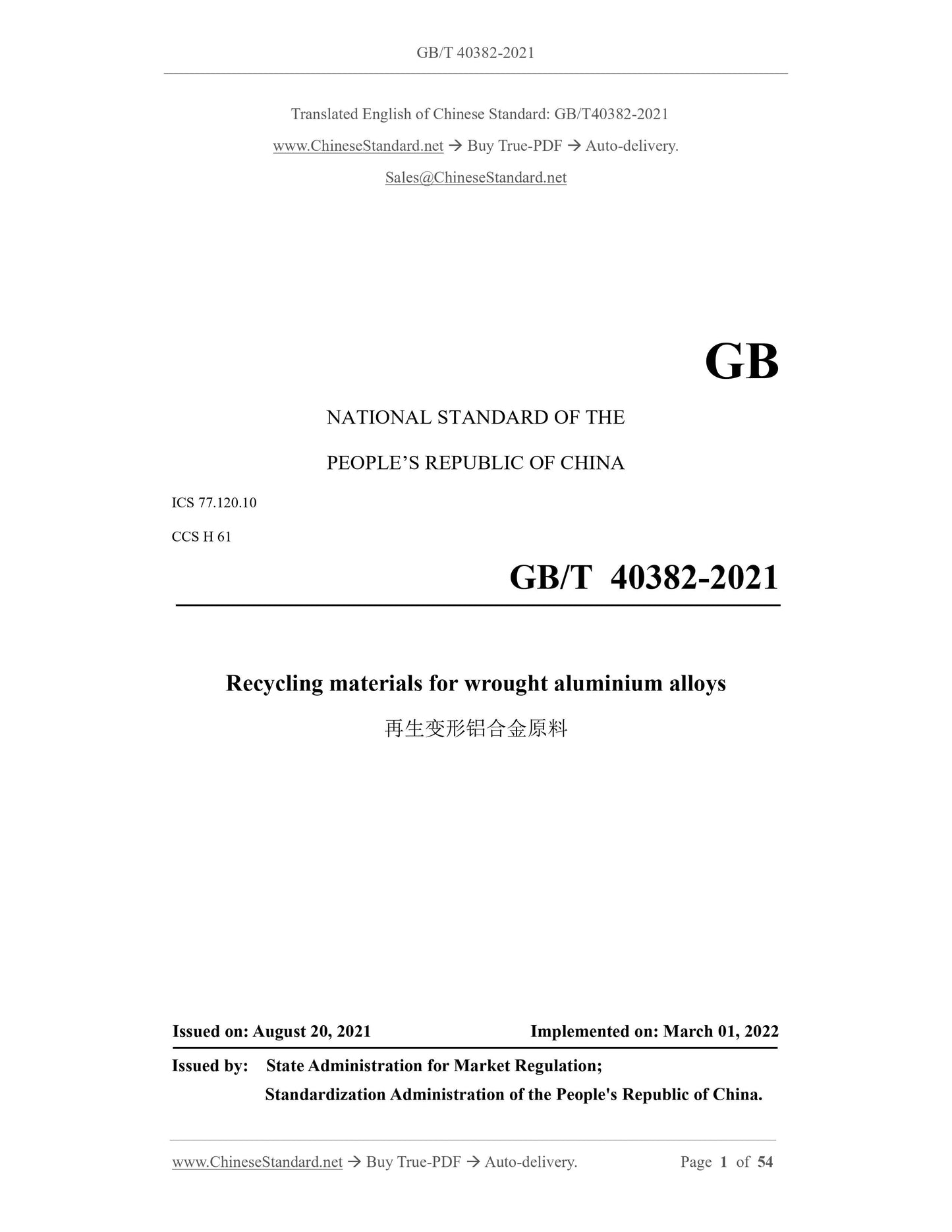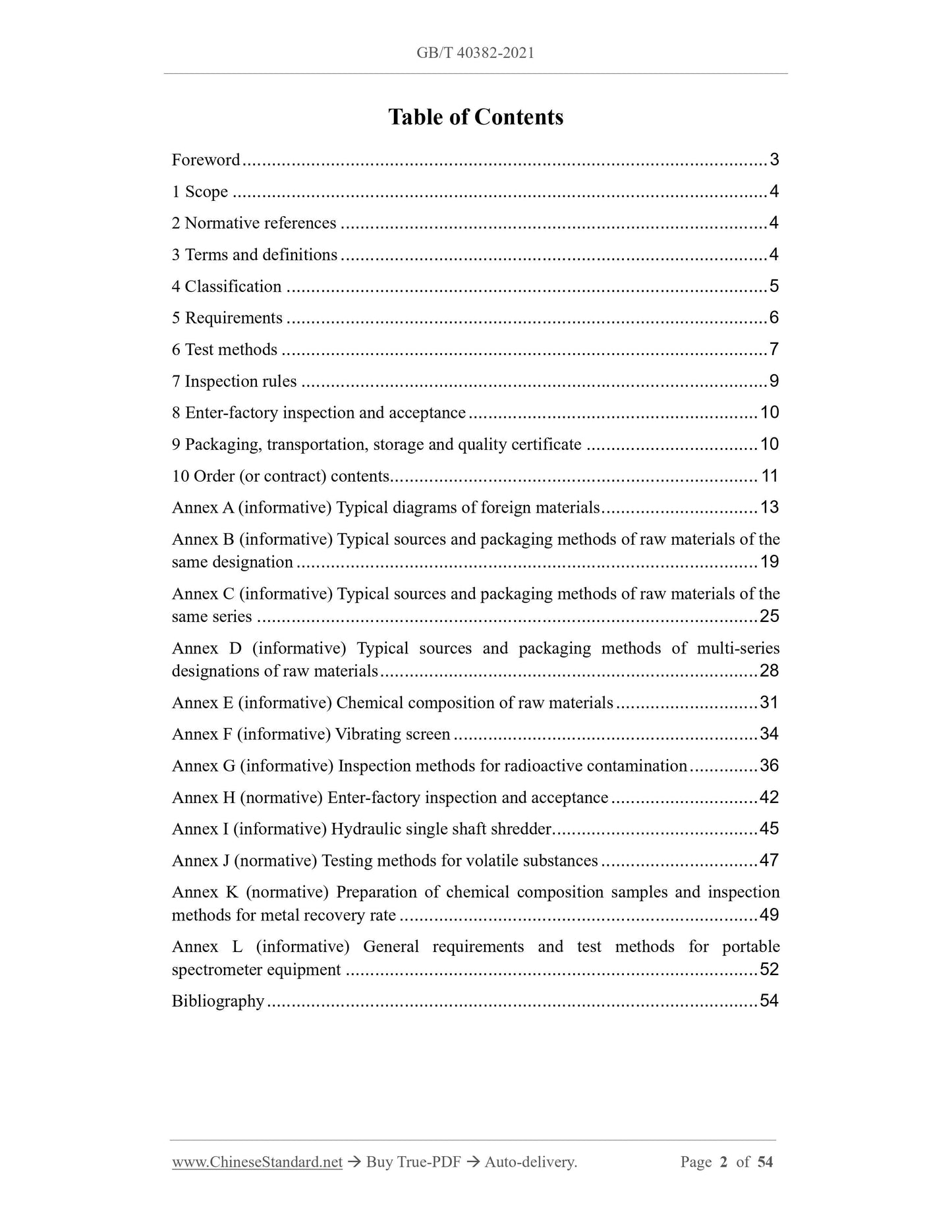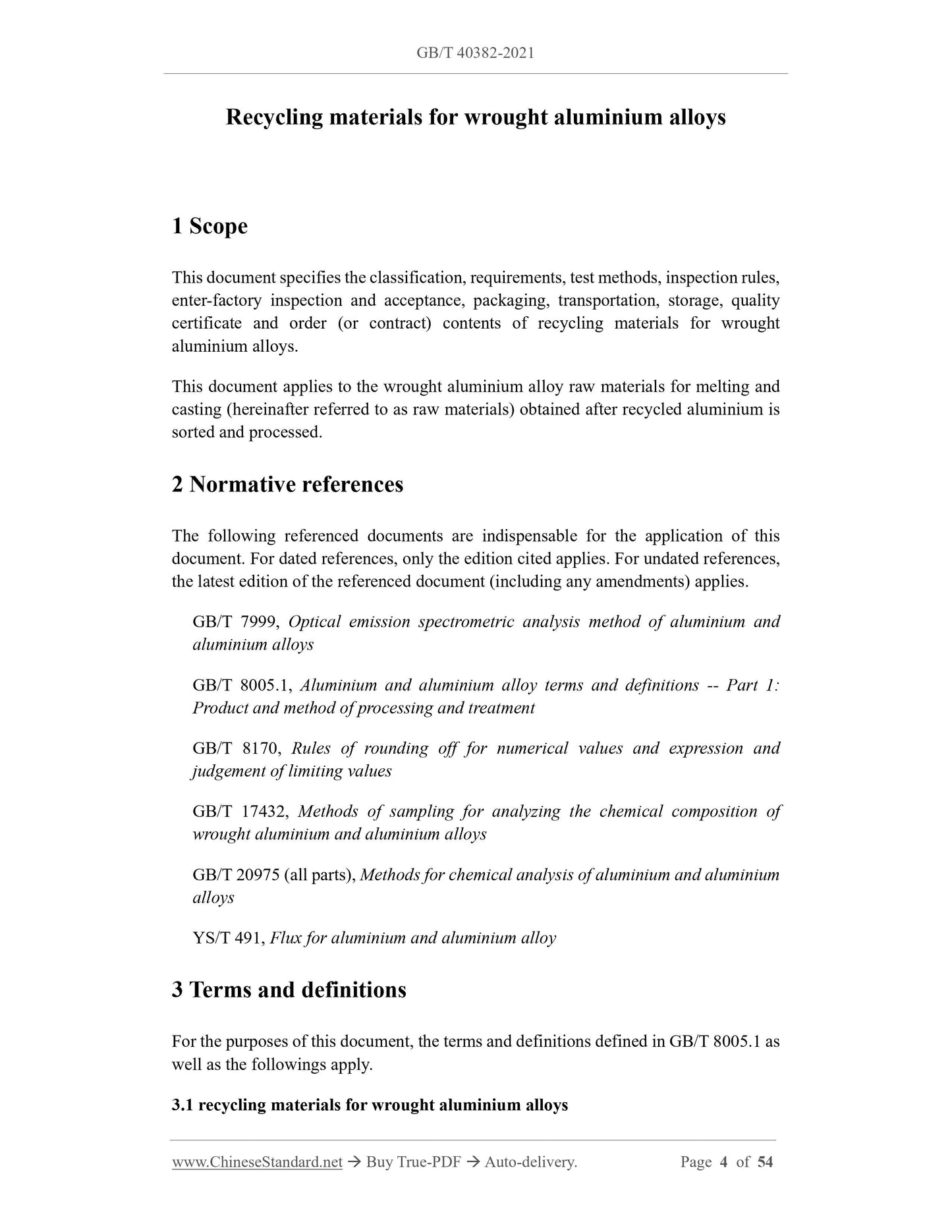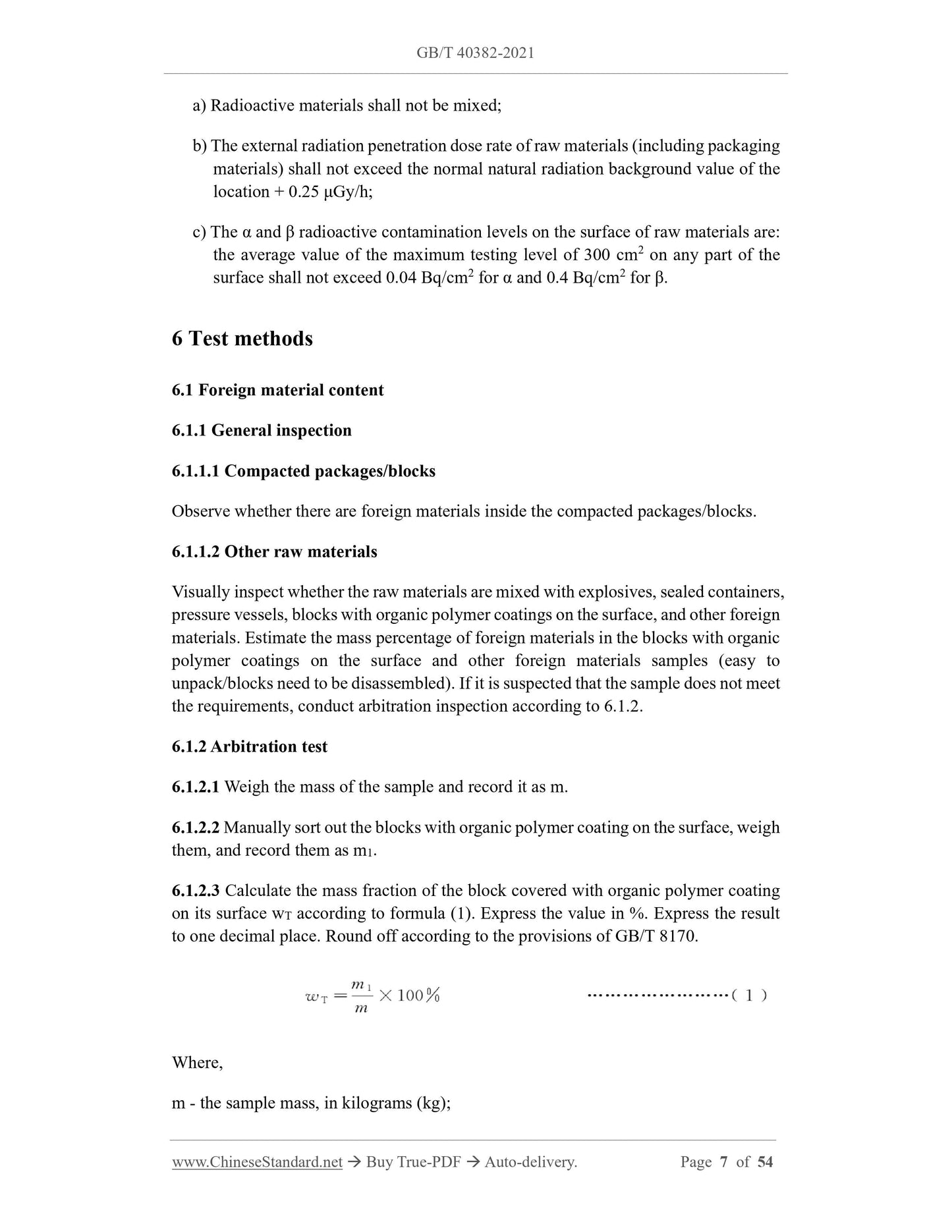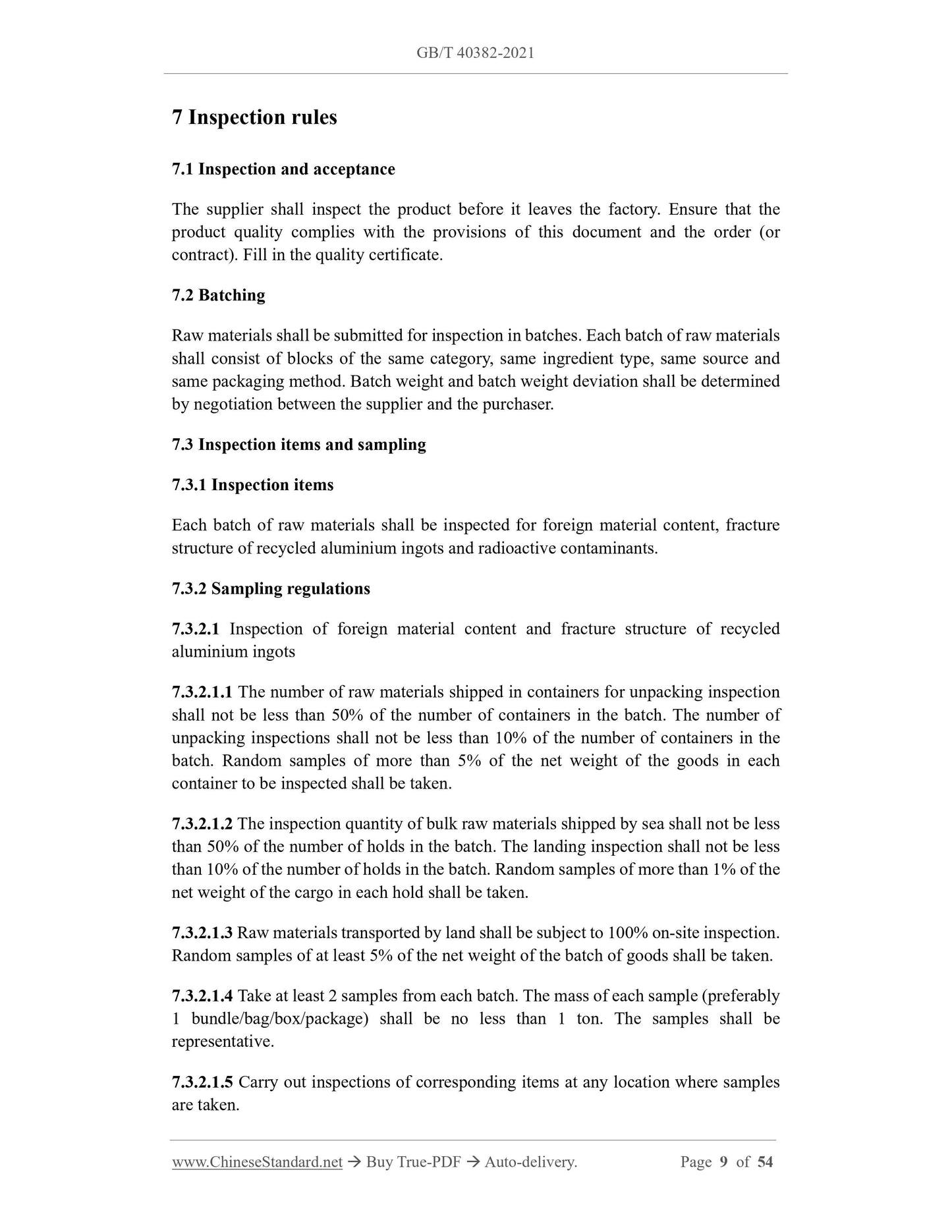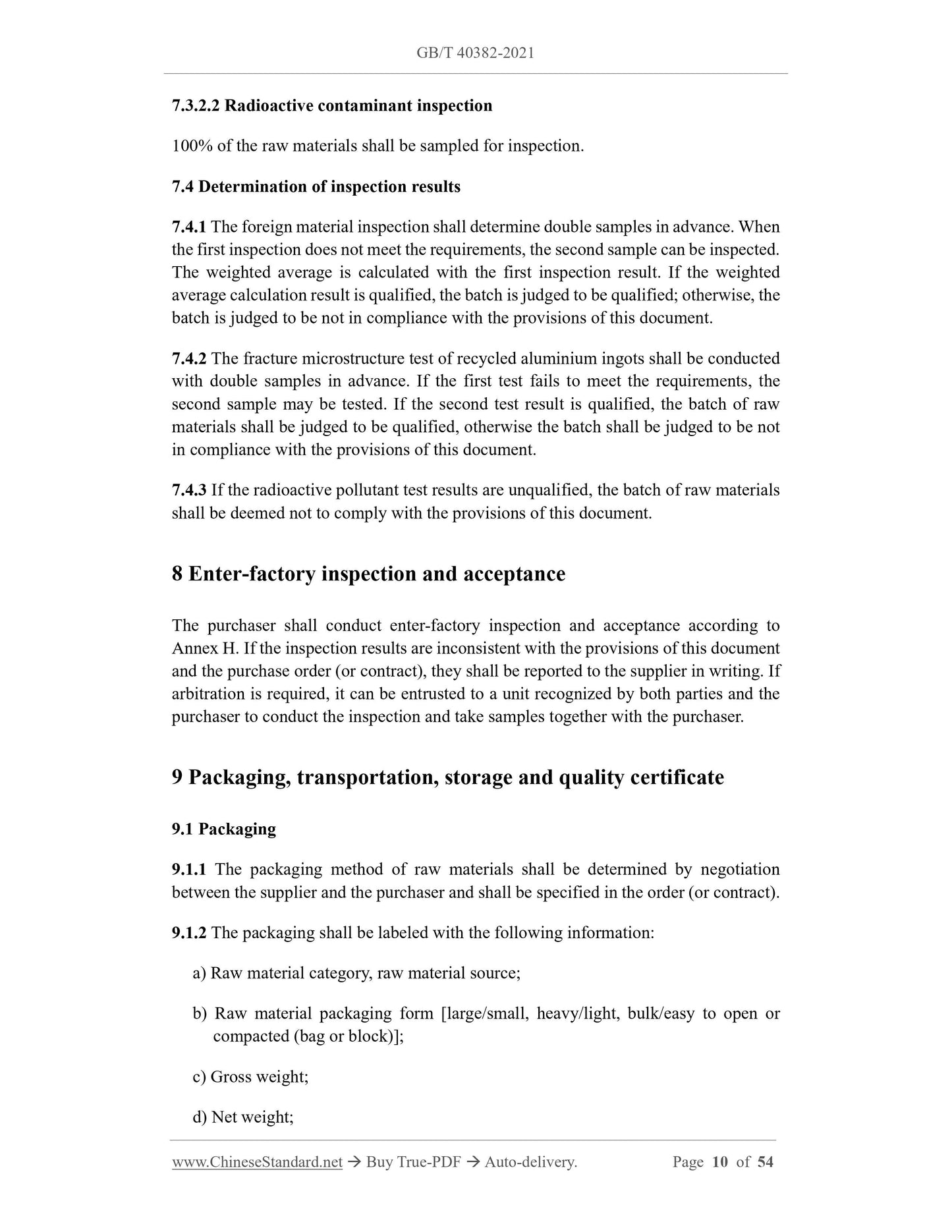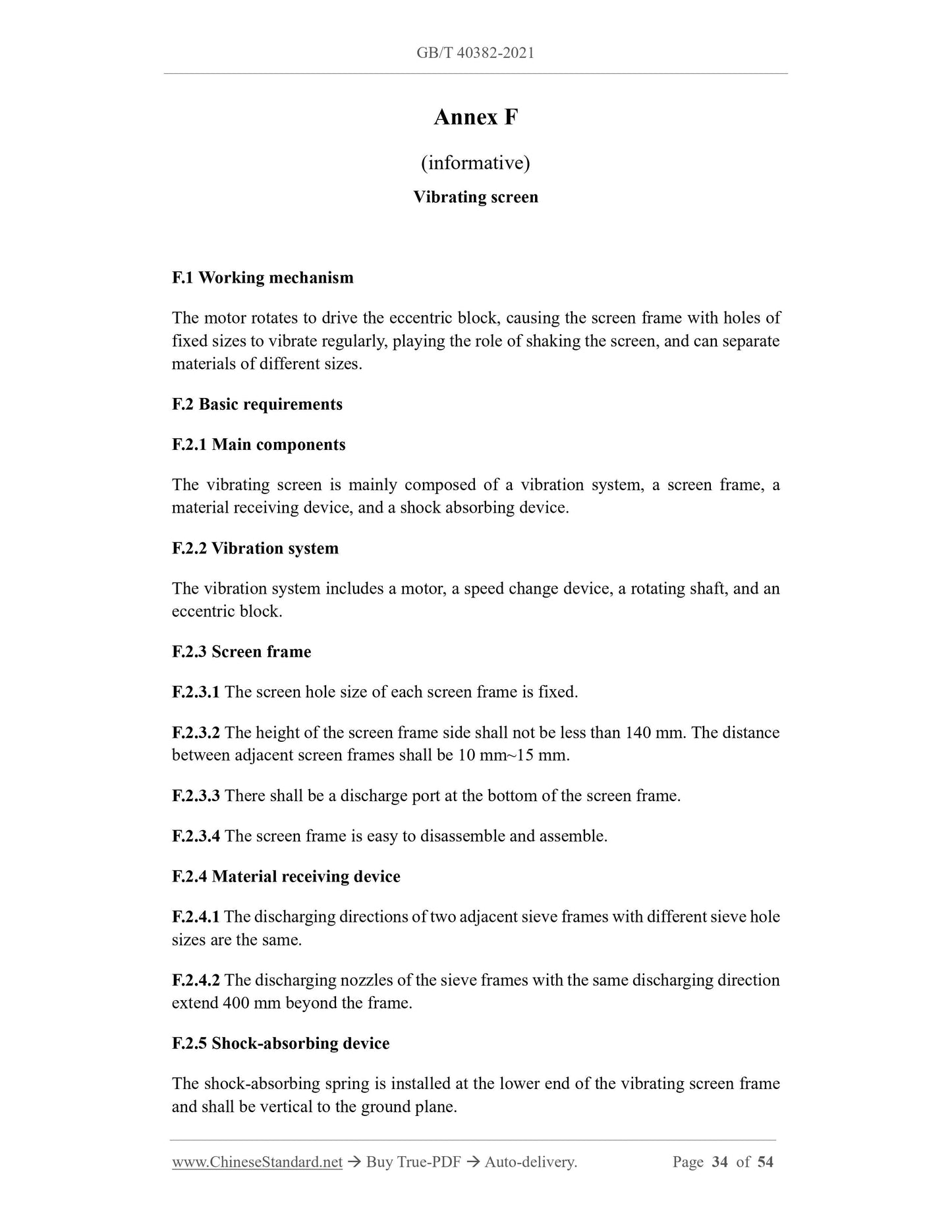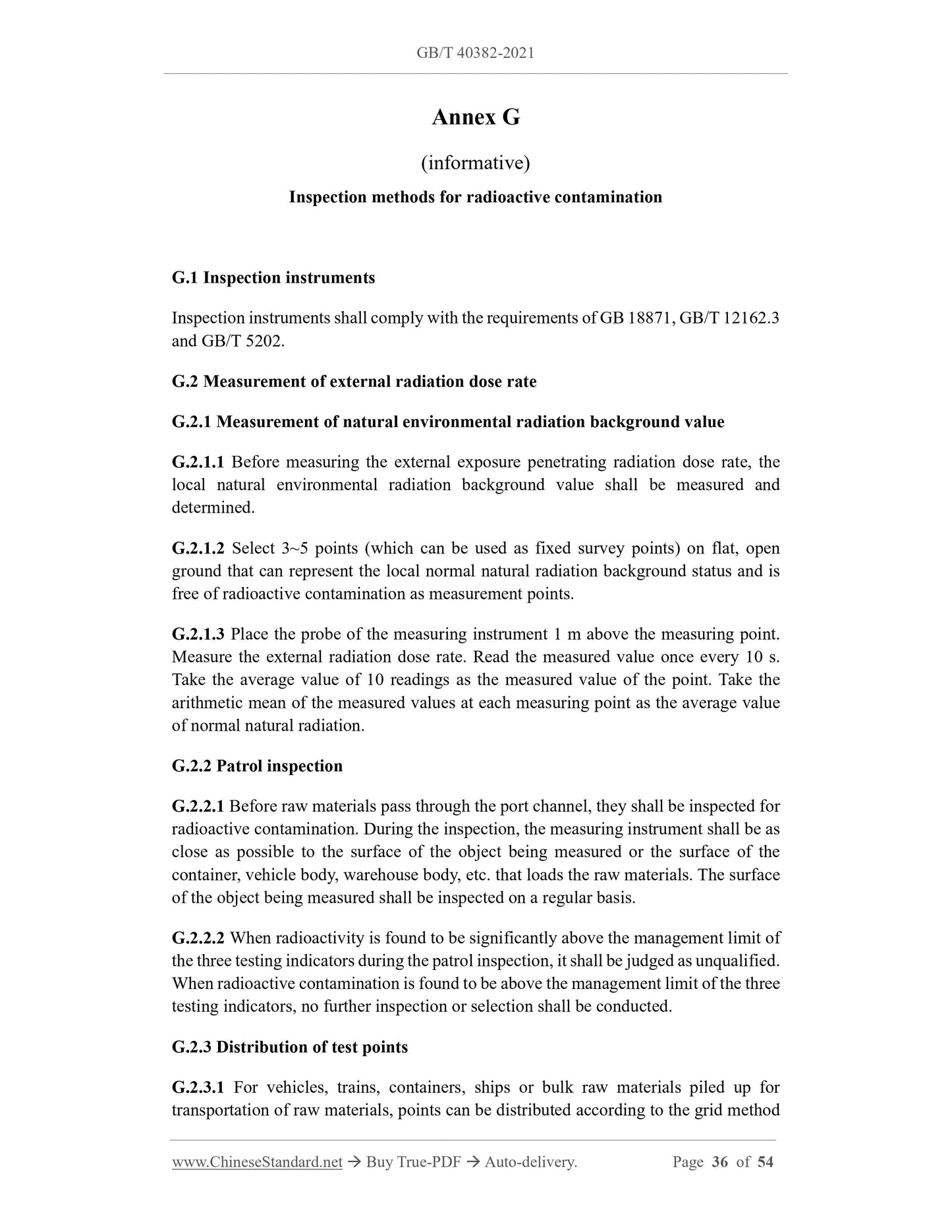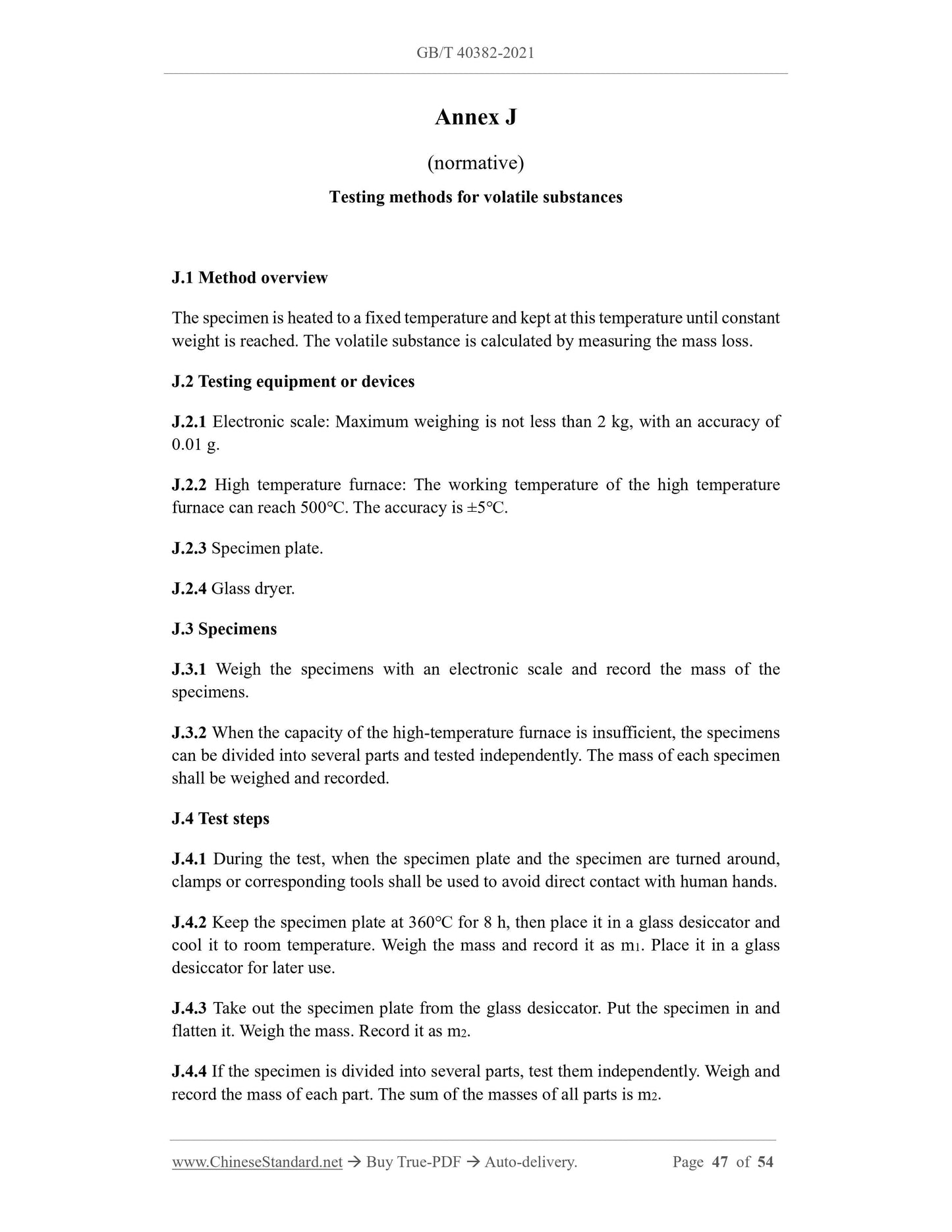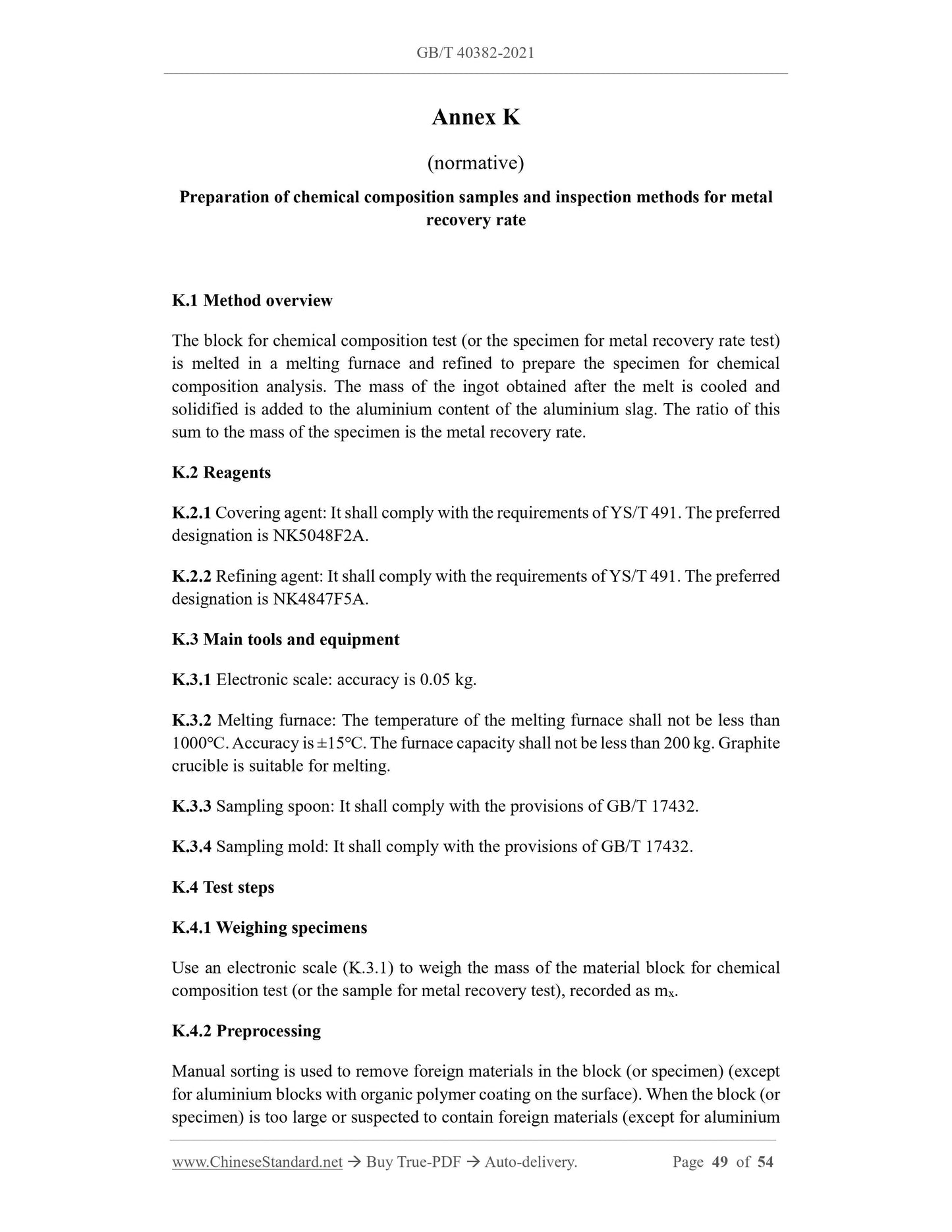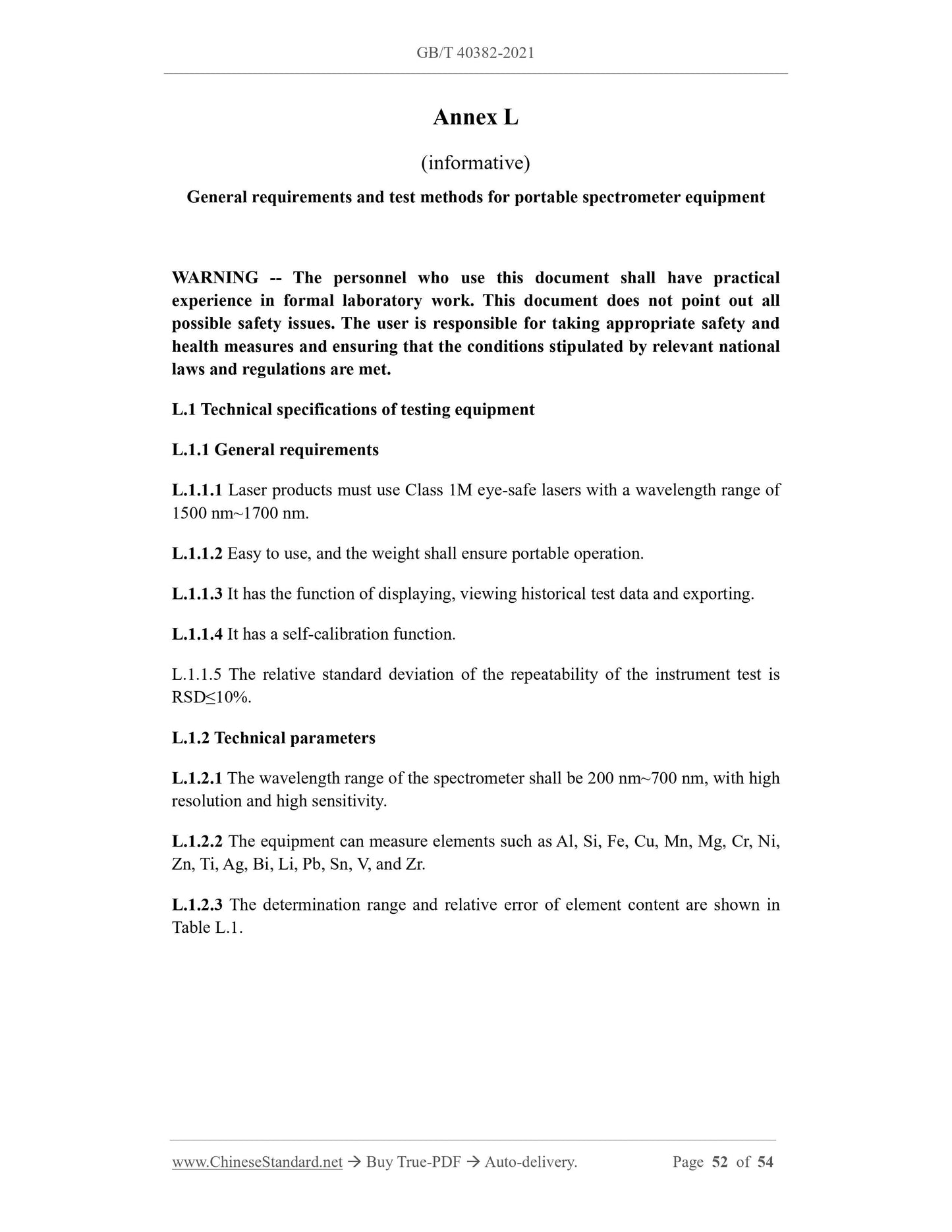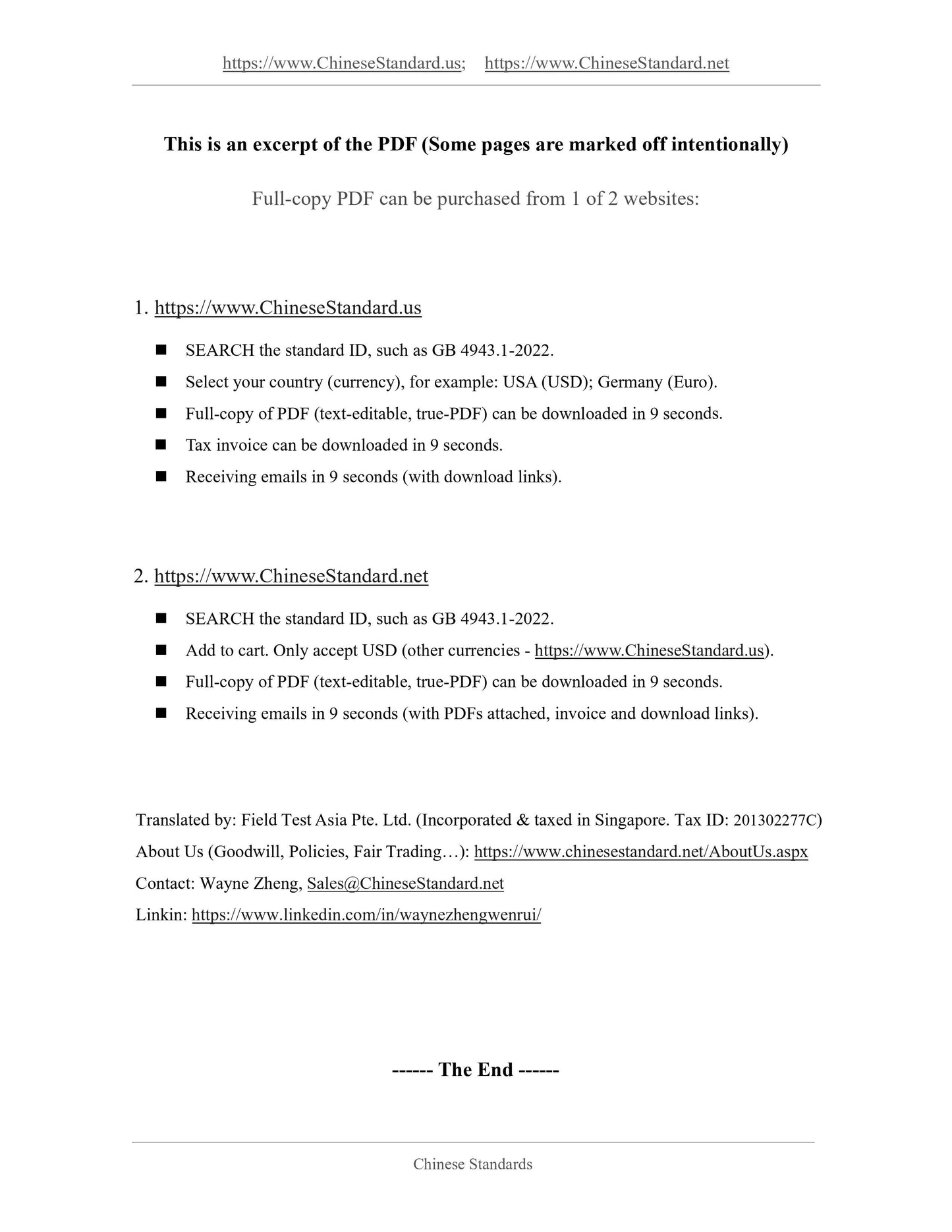1
/
of
12
www.ChineseStandard.us -- Field Test Asia Pte. Ltd.
GB/T 40382-2021 English PDF (GB/T40382-2021)
GB/T 40382-2021 English PDF (GB/T40382-2021)
Regular price
$620.00
Regular price
Sale price
$620.00
Unit price
/
per
Shipping calculated at checkout.
Couldn't load pickup availability
GB/T 40382-2021: Recycling materials for wrought aluminium alloys
Delivery: 9 seconds. Download (and Email) true-PDF + Invoice.Get Quotation: Click GB/T 40382-2021 (Self-service in 1-minute)
Newer / historical versions: GB/T 40382-2021
Preview True-PDF
Scope
This document specifies the classification, requirements, test methods, inspection rules,enter-factory inspection and acceptance, packaging, transportation, storage, quality
certificate and order (or contract) contents of recycling materials for wrought
aluminium alloys.
This document applies to the wrought aluminium alloy raw materials for melting and
casting (hereinafter referred to as raw materials) obtained after recycled aluminium is
sorted and processed.
Basic Data
| Standard ID | GB/T 40382-2021 (GB/T40382-2021) |
| Description (Translated English) | Recycling materials for wrought aluminium alloys |
| Sector / Industry | National Standard (Recommended) |
| Classification of Chinese Standard | H61 |
| Word Count Estimation | 42,499 |
| Issuing agency(ies) | State Administration for Market Regulation, China National Standardization Administration |
Share
